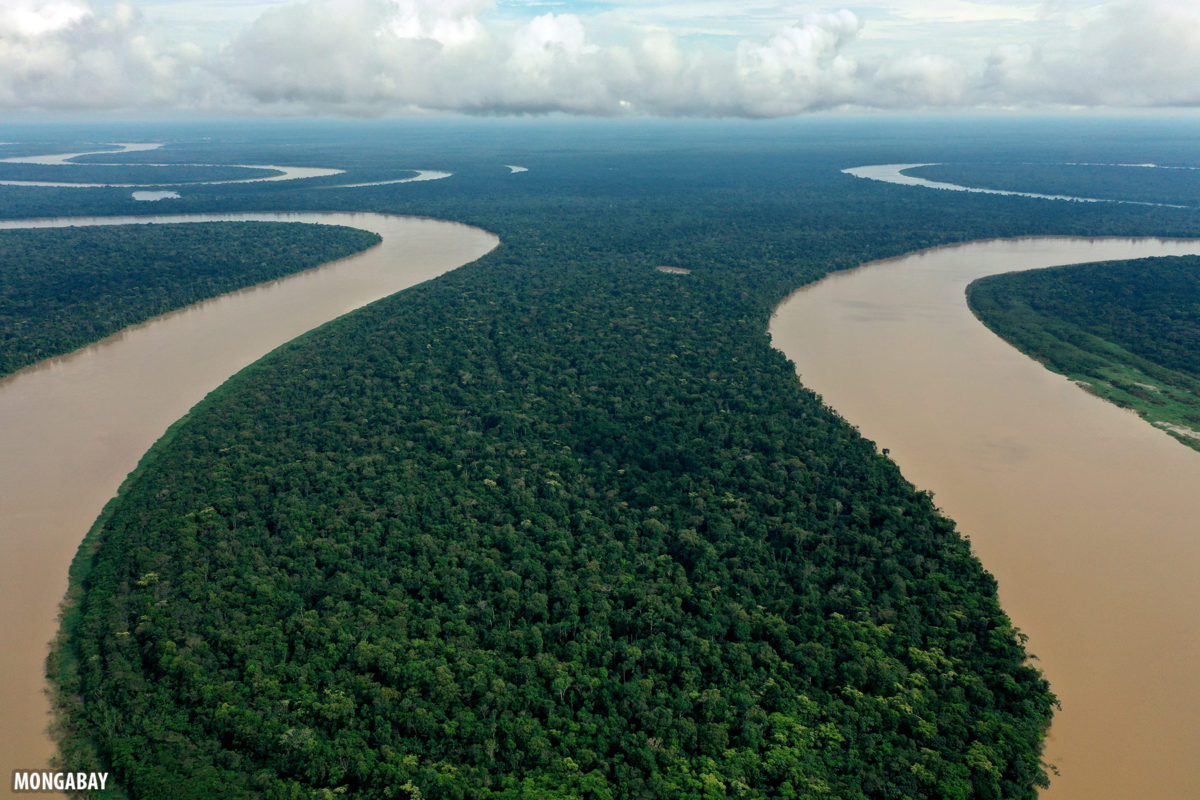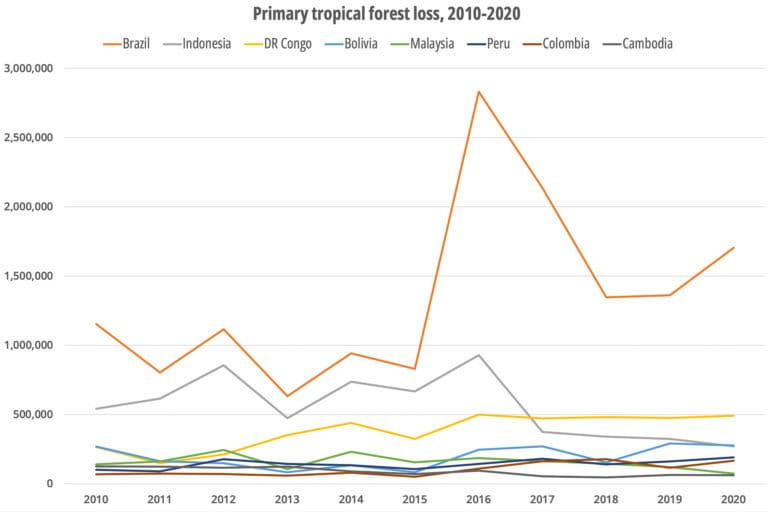2021 was a year where tropical forests featured more prominently in global headlines than normal thanks to rising recognition of the role they play in addressing climate change and biodiversity loss.
The following is a brief look at some of the major rainforest storylines from 2021.
Tropical deforestation persists at a high level
Despite speculation in the early months of the pandemic that slowing economic activity might diminish forest clearing, loss of both primary forests and tree cover in the tropics accelerated between 2019 and 2020: Primary forest loss jumped 12% to 4.2 million hectares; tropical tree cover loss rose 1.5% to 12.5 million hectares.
We don’t yet know how much forest loss occurred in 2021, but deforestation in the Brazilian Amazon rose 22% for the year ended July 31, 2021, according to Brazil’s national space research institute INPE. Given that about a third of tropical primary loss forest worldwide has occurred in Brazil over the past 20 years, this suggests tropical forest loss will remain at an elevated level when the 2021 tally is released by Global Forest Watch in March or April 2022.
Governments talked more about tropical forests
Between major U.N. summits on climate change and biodiversity, the IUCN Conservation Congress, and high-level talks between G20 leaders, forests figured prominently in official discussions in 2021. These various meetings resulted in plenty of platitudes about the need to protect forests as part of climate change mitigation efforts but no legally-binding, time-bound agreements to end deforestation.
Arguably the highest profile forest-related pledge to emerge was the Glasgow Leaders’ Declaration on Forests and Land Use, which has now been signed by 141 countries that account for more than 90% of global forest cover, or 3.7 billion hectares. The Glasgow Declaration arguably supplants the 2014 New York Declaration on Forests, under which 39 countries and a number of companies, NGOs, and sub-national jurisdictions promised to halve deforestation by 2020 and eliminate it by 2030.


Glasgow Declaration signatories committed to “working collectively to halt and reverse forest loss and land degradation by 2030 while delivering sustainable development and promoting an inclusive rural transformation” but is voluntary. In a possible indication of the degree of seriousness that some countries are taking the measure, a day after signing, Indonesia’s Environmental and Forestry Minister said the declaration didn’t commit the country to stopping deforestation.
Financial commitments to forests
Accompanying these talks were commitments from governments and philanthropists to spend billions of dollars on forest conservation and restoration efforts.
For example, in April, the U.S., U.K. and Norwegian governments, working with private companies, launched the Lowering Emissions by Accelerating Forest finance (LEAF) coalition to accelerate payments to tropical countries for reducing deforestation. In November, at COP26, the initiative announced it had reached its initial goal of mobilizing $1 billion.
LEAF’s billion dollars was part of $19.2 billion in forest-related financial pledges announced at the meeting. But details are sparse on how this money will be used, where it will come from, and the extent to which it includes repackaging of previous commitments.
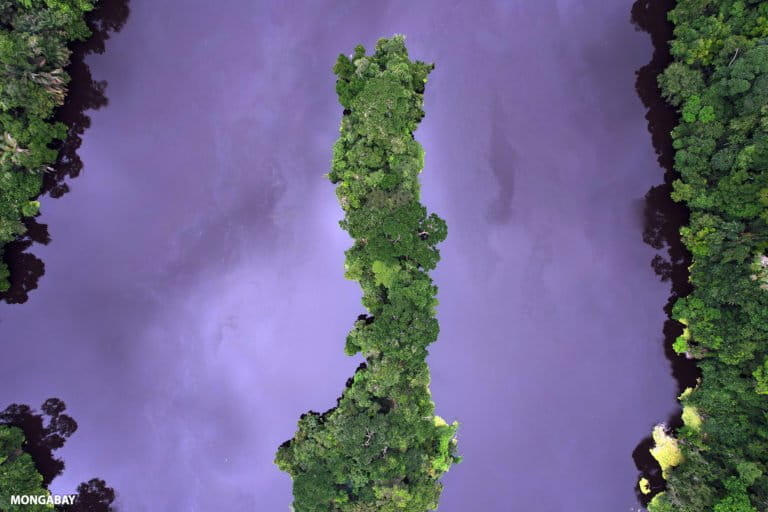
Philanthropists also made substantial commitments to forests, the biggest of which came in September when nine foundations and NGOs pledged to put a combined $5 billion over the next ten years to “to support the creation, expansion, management and monitoring of protected and conserved areas of land, inland water and sea, working with Indigenous Peoples, local communities, civil society and governments”.
Greater scrutiny of commodity supply chains and financiers
Considerable attention was paid in 2021 to the impact the products in our daily lives play in driving the degradation and destruction of tropical forests. Journalists and civil society organizations published numerous reports and investigations linking commodities like beef, palm oil, and soy to deforestation and human rights abuses. Materials needed to power the renewable energy transition and booming demand for tech products didn’t escape scrutiny: Investigations revealed the dark side of the production of cobalt, nickel, gold, and other metals and minerals. A study published in Frontiers in Forests and Global Change estimated that nearly a million square kilometers of intact forests lie within mining or oil and gas concessions.
Activists and journalists also increasingly put a spotlight on the banks, investors, and fund managers who are financing deforestation. For example, an investigation by Profundo found that pension funds in the Netherlands and Japan have invested $500 billion in Brazil’s top three meatpackers, while an analysis by Forests & Finance concluded that the world’s 50 largest financial institutions plowed more than $8 billion of investments in deforestation-linked companies since the start of the pandemic.

Western governments continued to discuss imposing restrictions on products linked to deforestation. While laws like the Lacey Act in the U.S. and FLEG-T in the European Union have long barred commodities produced illegally, some of the newly proposed rules would apply to products associated with legal deforestation. Such legislation would require suppliers to prove their products haven’t contributed to legal or illegal deforestation.
And it wasn’t only governments taking action to limit deforestation from their supply chains. While private sector zero deforestation commitments have badly missed their targets so far, several major supermarkets in Europe announced they would stop sourcing beef from Brazil due to deforestation concerns and the Forest Stewardship Council (FSC) expelled Indonesian-South Korean palm oil giant Korindo from its certification scheme for its history of clearing forests in Papua.
Interest in ecosystem restoration is growing
Interest in tree-planting continued to grow as the world increasingly embraced the idea of deploying “nature-based solutions” to help address global problems. In September, primatologist and conservation icon Jane Goodall formally joined the movement by announcing Trees for Jane, an initiative that will raise money for carefully-vetted reforestation and forest conservation.
But the enthusiasm was tempered to a degree by a spate of warnings about the potentially adverse effects of poorly conceived tree planting initiatives as well as revelations that the tree planting sector is dogged by plenty of problematic behavior, from outright scams to projects that greatly overstate their actual impact. Disclosure and transparency remain issues in the sector.
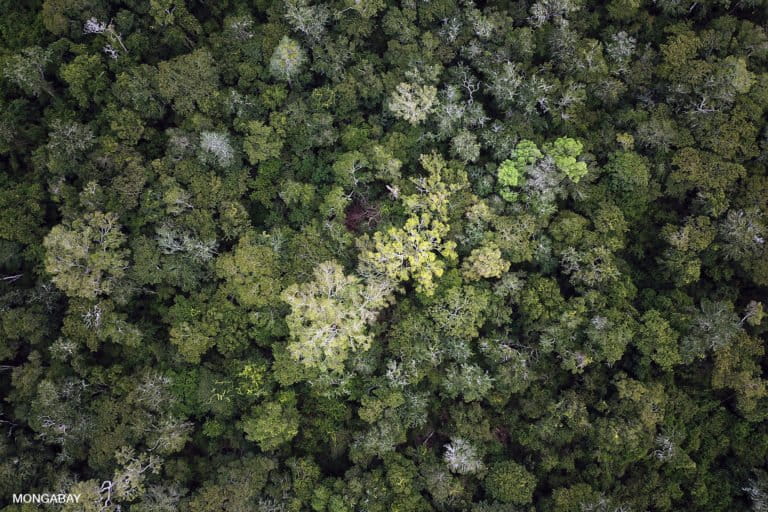
The forest carbon market entered into another boom cycle, with carbon prices rising sharply as a range of companies scrambled to make progress toward achieving their newly established “net zero” emission targets. In May, Singapore launched the Climate Impact X initiative, which includes a marketplace for nature-based carbon projects and a conventional carbon credit exchange.
In June, the U.N. Environment Programme (UNEP) and the Food and Agriculture Organization (FAO) kicked off the United Nations Decade on Ecosystem Restoration with the goal of restoring at least 1 billion hectares of degraded land in the next decade.
IPLCs are gaining recognition
Recognition of the contributions Indigenous peoples and local communities (IPLCs) make toward maintaining healthy and productive ecosystems continued to grow in 2021, with more large conservation organizations joining calls for climate change mitigation measures that include securing and strengthening communities’ land and resource rights. This shift represented a departure from the “fortress conservation” model which historically dominated the conservation sector, but is now increasingly seen as a relic of a colonial era. Indeed, criticism of the status quo in conservation was more widespread in 2021, pushing some organizations into reckoning with their past–and current–practices.

However despite growing visibility, IPLCs are still not receiving their share of conservation funds, according to an analysis published by Rainforest Foundation Norway. That study concluded that less than 1% of overseas development assistance for mitigation and adaptation to climate change in tropical countries between 2011-2020 went to IPLCs’ tenure rights and forest management. But the lead author of that report said afterward that the share is actually significantly smaller than 1% if one counts only money that went to projects that specifically included an IPLC organization. That balance could shift however if commitments made during COP26 come to fruition: Some $1.7 billion was pledged to IPLCs at the summit.
Nonetheless that $1.7 billion represents only a small fraction of the level of ambition being proposed. The Peoples Forest Partnership, a coalition of organizations and investors that formed this year, put forth a plan to mobilize $20 billion per year by 2030 in direct funding for Indigenous forest conservation projects. Meanwhile, a group of Amazonian Indigenous organizations advanced a plan – called the Amazon Sacred Headwaters – to protect 33 million hectares (82 million acres) of rainforests in the Ecuadorian and Peruvian Amazon.
The stakes of this trend for climate and biodiversity are substantial: A report published by the FAO in March estimated that about 45% of the intact forests in the Amazon Basin lie within Indigenous territories.
But environmental defenders are still being targeted
2021 remained a dangerous time to be an environmental defender. A Global Witness report released in September confirmed what the environmental community already suspected: 2020 was the worst year on record in terms of killings of environmental defenders. Global Witness tallied 227 killings, led by Colombia with 65. There were plenty of signs of violence extending into 2021, including numerous reported incidents of violence against Indigenous communities in the Brazilian Amazon.
A report published in March warned that during the pandemic, governments rolled back Indigenous rights and environmental protections while prioritizing incentives to expand industrial agriculture, infrastructure, and extractive sectors.
Forests’ ecosystem services are diminishing
Several studies published in prominent journals this year documented the diminishing capacity of tropical forests to function as carbon sinks due to deforestation, degradation, and the effects of climate change. These included multiple papers that provided more evidence to suggest that the Brazilian Amazon is now a net source of carbon emissions. Fires are weakening and killing tropical forests on a massive scale.
Other research looked at the impact deforestation has on workforce productivity and public health.
Developments in the Amazon, Congo, and Southeast Asia
Brazil: As noted above, according to INPE, deforestation in the Brazilian Amazon rose 22% for the year ended July 31, 2021 relative to the prior year. INPE data also suggests that the elevated deforestation rate has persisted since July, which is consistent with figures from Imazon, a Brazilian NGO that independently tracks forest clearing in the Amazon.


In 2021, the Bolsonaro administration continued to lay the groundwork for deforestation to increase in the future by taking more steps to legalize deforestation, turning a blind eye to illegal logging and land invasions, curbing environmental law enforcement, and taking aim at critics of its environmental policies. Ricardo Salles, Brazil’s environment minister, resigned after he was personally caught up in an illegal logging scandal.
A case in front of Brazil’s Supreme Court that could have had major implications for Indigenous land rights was postponed. Ahead of that ruling, thousands of Indigenous peoples from across Brazil had gathered in Brasilia to make their voices heard.
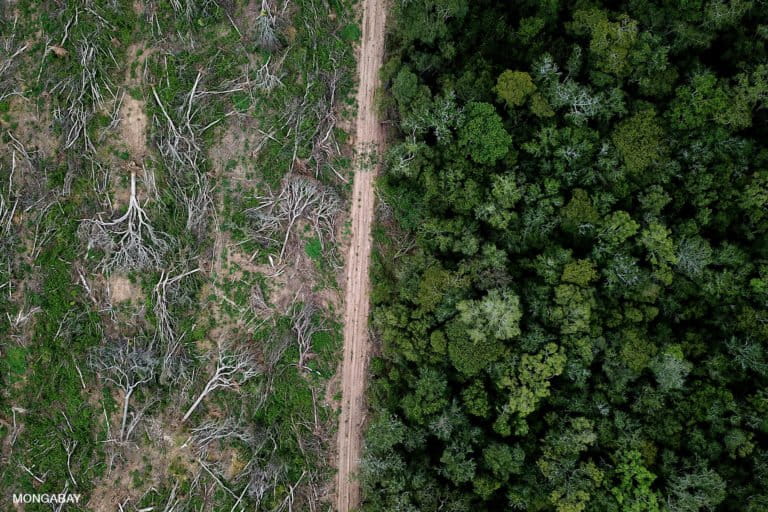
Bolivia: Protected areas in Bolivia, which experienced the third highest loss of primary tropical forest in 2020, had recurring issues with encroachment, illegal deforestation, and fire.
Colombia: While Colombia has prioritized stopping deforestation under its climate goals, forest loss has been trending upward in the country. In 2021 there were widespread reports of illegal encroachment into protected areas, including illicit road-building, colonization, cattle-ranching, and large-scale agriculture. On a positive front from an environmental standpoint, Colombia pledged to declare 30% of its territory as “protected” by 2020–eight years ahead of what many other countries have as a target under the 30×30 initiative.

Peru: Reeling from the world’s worst COVID death rate, Peru struggled to combat illegal deforestation by miners, loggers, and narco-traffickers. Corruption didn’t help the situation. Nonetheless, the government created the 1.1 million hectare Yavarí Tapiche Indigenous Reserve for peoples in isolation and initial contact (PIACI). Peru also received more than $400 million in commitments from the governments of the U.S., Britain, Germany, and Norway to protect forests.
Scientists and environmentalists warned that a planned highway that would link the Brazilian state of Acre to the Pacific coast could unleash catastrophic deforestation.
The Congo Basin is home to the world’s second-largest rainforest. It’s also a region where deforestation is on the rise, forests experiencing a drying trend, and there are big plans for infrastructure development and investments in extractive industries. Accordingly, the Congo Basin is seen as a critical part of efforts to combat climate change.
In short, the region attracted significant new financial pledges for forest conservation, while a tug-of-war over the fate of the massive peatlands that straddle Republic of Congo and the DRC continued between interests who want to exploit the area for oil extraction and timber production versus those who wish to maintain the integrity of the wetland, which stores more than 30 billion metric tons of carbon. Meanwhile DRC weighed lifting a two-decade-long moratorium on the issuance of logging concessions.
John Cannon: The Congo Basin’s 10 most consequential stories on 2021.
Over the past five years no country has seen its rate of primary forest loss decline as much as Indonesia. A combination of government policy, macroeconomic factors, and a high baseline deforestation rate due to large-scale fires and forest loss in 2015 are all factors in this trend.
However, since the onset of the pandemic, the Indonesian government has been enacting measures that could lock in high rates of forest loss well into the future. These include a biofuels mandate to prop up palm oil demand, a food security law which will require vast extents of land, and the decision to let a moratorium on new plantation concessions expire. At the same time, Indonesia has been moving in a more authoritarian direction, imposing restrictions on speech and civil society organizations while undercutting scientists. The government also cancelled a $1 billion REDD+ agreement with Norway, which while small in relative terms and slow to pay out benefits, was nonetheless seen as a symbol of international collaboration on protecting forests. And at COP26, Indonesia’s Forestry and Environment minister raised eyebrows when she signaled that her government did not view the Glasgow Declaration as a commitment to end deforestation by 2030.
Illegal forest clearing and land conflict continued to be major issues in Indonesia. An analysis by Greenpeace and TheTreeMap found that a fifth of oil palm plantations are operating illegally inside designated protected areas. The sense of impunity is not surprising given the degree to which rules are enforced: The so-called “omnibus bill” passed in response to COVID even granted amnesty for oil palm plantations operating illegally inside forest areas. Other examples: a report from a coalition of NGOs found that pulp and paper giants APP and APRIL have continued to plant on degraded peatlands inside their concessions, despite requirements to protect and restore these ecosystems, while Indonesia’s highest court upheld a ruling that declared a palm oil company not responsible for fires that occurred on peatlands it had drained within its concession.

Papua, which contains the majority of Indonesia’s remaining intact forests, continued to be a battleground for the future of the archipelago’s forests. The central government continued to move forward with plans to build and fortify roads across the region, potentially opening up more of its forests to logging, plantations, mining, and colonization, including Lorentz National Park, a UNESCO World Heritage Site. However the provincial government in West Papua revoked permits for 12 concessions covering 268,000 hectares of land–including more than 150,000 hectares of forest–after conducting a legal review. That decision was upheld by a court in December, opening the door for Indigenous communities whose territory was occupied by the concessions to formally get their land rights recognized.
Phil Jacobson: Major developments for Indonesia’s forests in 2021.
Other parts of Southeast Asia
Malaysia: Citizens of Sabah, Malaysia were surprised in November to learn that two million hectares of rainforest had been leased in a secret carbon deal between the state government and foreign companies.
Myanmar: The coup in Myanmar unleashed fears that the ruling junta would exploit the country’s forests as a source of funds. Satellite imagery analyzed in August suggested that forest loss was indeed on the rise in southern Myanmar. Journalists and activists were targeted by the Tatmadaw.
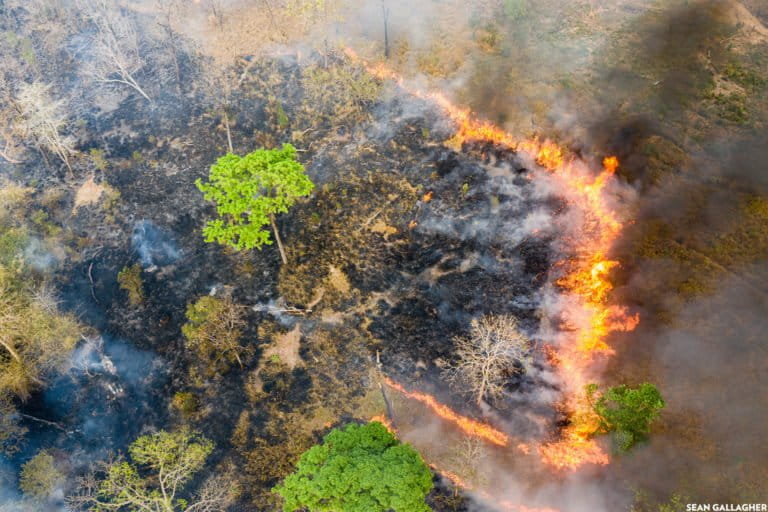
Cambodia: Cambodia’s remarkable rate of forest loss continued as did the crack down on environmental activists. In March, the government signed a new decree which granted 127,000 hectares to the Koh Kong provincial administration, prompting concerns that the forest-rich area would be deforested. Protected forests continued to dwindle.
Technology advancements eliminate ignorance as an excuse for inaction
In an important development for forest monitoring, World Resources Institute’s Global Forest Watch released an update that allows users to track deforestation shortly after it occurs despite being obscured by cloud cover. The system, known as Radar for Detecting Deforestation (RADD) alerts, uses radar data that can also penetrate smoke and haze, providing insight on forest loss that is occurring in areas that are otherwise shrouded. Radar additionally provides a more detailed picture on forest disturbance than Landsat imagery, enabling detection at an earlier stage.
The XPRIZE Rainforest contest announced that 33 teams qualified for its $10 million contest to produce real-time insights on rainforest health and value.
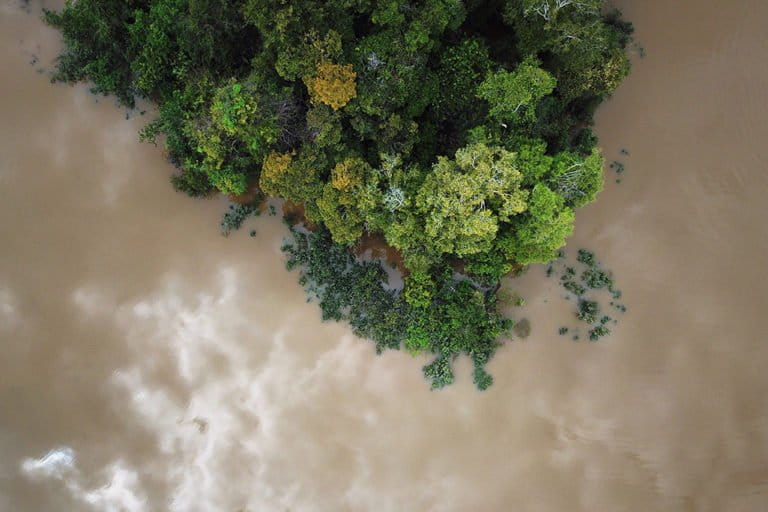
What’s in store for 2022?
Next week, Mongabay will take a look at some of the tropical forest trends and potential developments to watch in 2022.
Previous rainforest year-in-reviews:
2020 | The 2010s | 2019 | 2018 | 2017 | 2016 | 2015 | 2014 | 2013 | 2012 | 2011 | 2009

